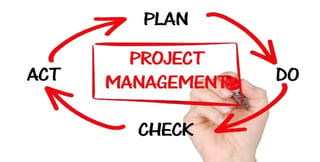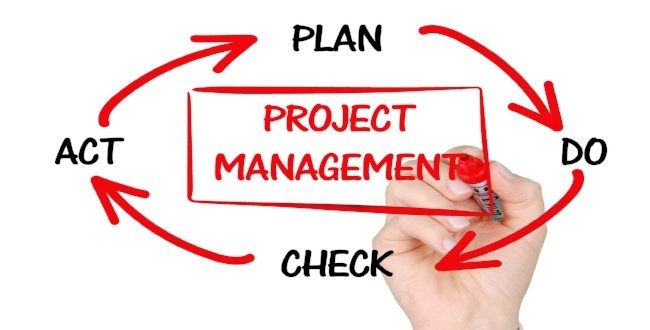

We often think of project managers as ‘the keepers’ of due dates, timelines, and budgets. However, we often underestimate the influence – both positive and negative – that project managers can have on the success [or failure] of a project through their interactions with people.
While this may seem somewhat obvious, many project managers are faced with the challenge of leading multiple teams through large scale, organizational-wide change without the positional authority or project management solution in-place that’s needed to get the job done. That’s the equivalent of attempting to make a citizen’s arrest; in theory it’s possible, but it’s a hell of a lot harder to do when you don’t have a badge [or an executive title] to flash.
Cue the concept of ‘informal authority’…
What Is Informal Authority & Why Is It Critical to Achieving Project Success?
FranklinCovey defines informal authority as “the ability to inspire team members to want to play on your team and win, even if they do not functionally report to you.”
Now if you fancy yourself a people person – a collaborator – a team player than you might think this sounds like a breeze, but it takes more then innate people skills to be an effective project manager. Rather, it’s the ability to apply proven structure, like the one detailed out in Project Management for the Unofficial Project Manager, and strategy to those innate people skills in order to extract the best out of your team.
Informal authority shouldn’t just be applied to your internal team, however. It’s absolutely critical that you inject it into your client relationships as well. Without it, you’ll find yourself a ‘yes man’ that has no control or influence over project scope or direction.
‘How do I establish informal authority without seeming like I have a superiority complex, you ask?’ Let’s read on…
3 Easy Ways to Establish & Maintain Informal Authority with Customers
-
Gaining stakeholder buy-in early and often
At the end of the day, your clients are the ones cutting your check. If they deem a project unsuccessful there’s no rationalization, justification, or logic that you can apply that will change things. You may be lucky enough to hold on to the business, but you’re more likely to receive a reduced scope of work or lose the relationship altogether. That’s why it’s critical to ensure that you have a full understanding of what project success looks like from the stakeholders perspectives’ before doing anything else. To do this, perform stakeholder interviews on the front-side of your campaigns – talk about their goals, vision, challenges, and priorities. Not only will you walk away aligned and with a full understanding of their expectations, but they’ll walk away feeling heard and validated.
-
Developing and communicating a system for risk management
Projects and road bumps go together like peanut butter and jelly – you can’t have one without the other. Critically thinking about the road bumps you’re likely to face, and communicating the steps that are going to be taken to both mitigate and resolve said issues, will help ease the pain and stress of future project challenges. It will also allow you to level set with your clients by helping them understand the role they play in successful project execution while establishing a forum for transparent communication. Internally, we utilize a system that weights and prioritizes risks based on impact and probability. However, there are plenty of systems that will allow you to detail out all project risks, prioritize them, and map out a system for effective risk management – it’s just a matter of preference.
-
Clear and consistent communication
Above all else, clear and consistent communication is key to project success. As the project manager, it’s your job to ensure that every single department, team member, and client counterpart knows exactly what’s going on, why, and the logistical details associated with each step. It’s your job to communicate project updates, when key milestones are hit, and when roadblocks or delays occur. And it’s your job to communicate how the project is tracking toward goal and timeline. If there are too many chinks in the communication chain, your project is destined to fail. To ensure seamless project communication, it’s important that you establish an agreed upon communication structure and cadence with your clients. To do this, detail out all types of communication that will take place throughout the course of the project (i.e. goal setting, budgetary, milestone updates, reporting etc.), the owner of each meeting, everyone that needs to be involved – both internal and external, and the cadence in which those meetings should take place. This will allow you to set clear communication expectations while also preventing too many one-off communication requests.
Influencing and managing customer expectations and perceptions is arguably the most important element of project effective management. However, without proper structure and process in place, you’re setting yourself, your team, and your clients up to fail. By leveraging the 3 aforementioned strategies for injecting informal authority into your projects, you’ll be able to lead your team and clients to successful project execution.
For more insight into project management solutions and how to hone your project management skills, subscribe to our blog!
